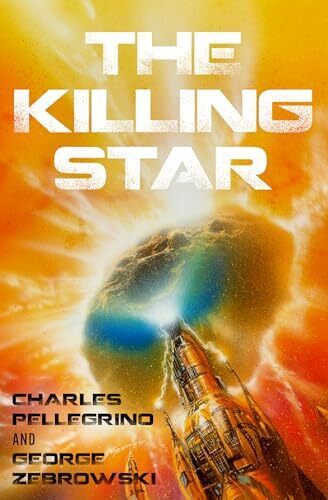
One of those sci-fi books that is absolutely stuffed with huge, fascinating, eye-opening ideas… But is completely lacking in terms of developing characters. So the concepts are terrific, but the story isn’t especially memorable. This is very similar to Liu Cixin, both in style and content, although The Killing Star predates The Three Body Problem by more than a decade.
Some of the ideas that stuck out to me:
-
The power of relativistic weapons. If you have an object traveling at near the speed of light, then there’s no real way to stop it. In fact, to detect it, you rely on signals that travel at a speed similar to the object, so you can’t actually be sure where it even is!
-
Living inside massive asteroids. You can create multiple layers (shells), like floors in a building, with a thick outer layer (potentially multiple kilometers thick) to protect you from space debris, while the inner layers provide the surface to live on, plus various construction materials.
-
The idea that DNA uses various animal bodies to replicate itself. So you’re not really the primary thing: you’re just a vehicle. In fact, one vehicle of many, as DNA replicates and evolves. This is an idea I saw in The Selfish Gene, but it was fun to see it in a sci-fi book.
-
The dark forest theory. The idea is that all alien civilizations are silent and hostile, like hunters in a dark forest, which explains the Fermi paradox. This is because every civilization has to realize that there’s a chance that other civilizations out there may try to wipe them out; even if this is a tiny chance, the cost is so severe (complete extinction of your species), and the spans of times we are discussing are so long (civilizations can survive for thousands or millions of years), that the only rational behavior is to (a) hide from all other civilizations so they can never discover you and (b) if you do discover another civilization, wipe them out first. This same theory was popularized by the Three Body Problem series of books a decade later.
-
Not only do you need to hide from other civilizations, but you shouldn’t even look for them yourselves. The mere act of receiving data from the universe could get you infected and killed. In this book, the aliens broadcast a radio signal that can infect listening machinery with a virus that causes a “molecular recoil” which raises the melting point of many common materials, so everything around you melts—but only after spreading this self-replicating virus further.
-
Using self-replicating robots to build massive projects. You only have to produce a few robots initially, and then the robots seek out the materials they need to build more robots, and more robots, and so on, until they have enough robots to build the actual project you wanted.
-
The parable of the talking horse. Two men are sentenced to death. The day before execution, one of them demands an interview with the king, and comes back from the interview looking cheerful. “The king has pardoned me, provided I can get his horse to talk within 1 year,” he says. The other prisoner responds, “But what’s the point? You’ll never be able to get a horse to talk.” The first prisoner replies, “Who knows what will happen in a year? Perhaps the king will die, or the horse will die, or the kingdom will collapse, or perhaps the horse will talk.”
-
In the book, they “resurrect” creatures of the past using cloning technology on their DNA, initially with dinosaurs (with a hefty nod to Jurassic Park by naming one of the dinosaurs Crichton), but later on with humans. This includes Jesus and Buddha, which leads to some interesting philosophical and theological discussions (is this what was meant by the second coming of Christ?), as well as the Pharaohs of Ancient Egypt (almost as if the Pharaohs knew that preserving their bodies in the pyramids would allow them to be resurrected!).
-
Leaving a layer of dust trailing behind as a “shield” for a spaceship against relativistic weapons: at those speeds, if a relativistic dart strikes even small particles of dust, it would be enough to destroy that weapon, while doing no harm to the spaceship.
